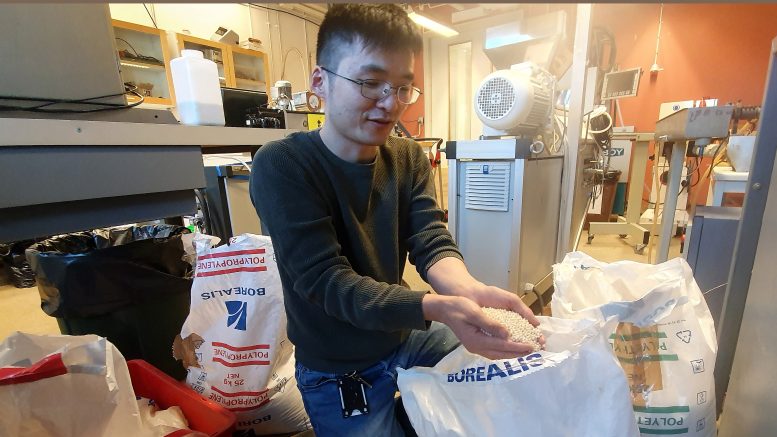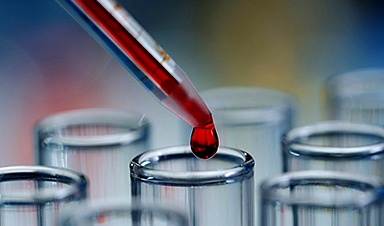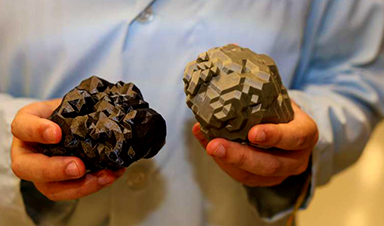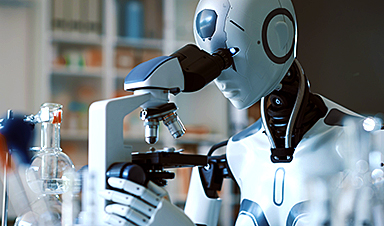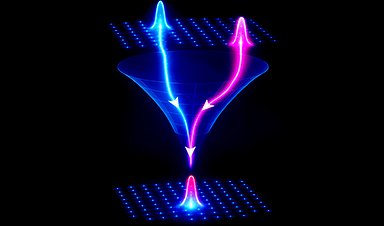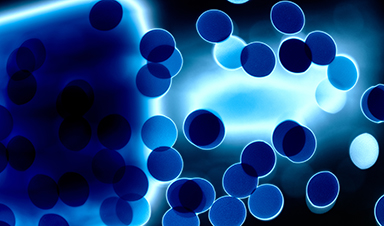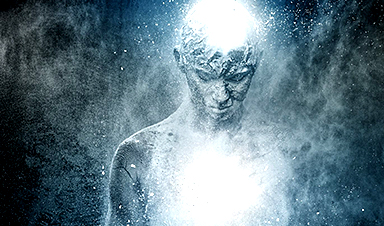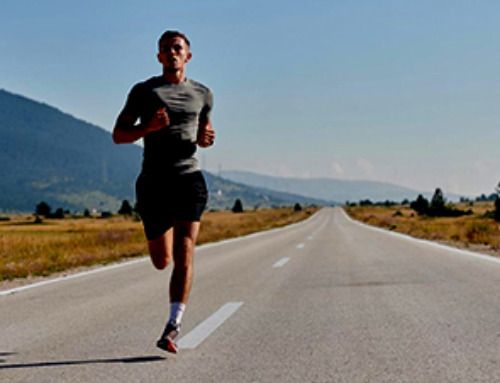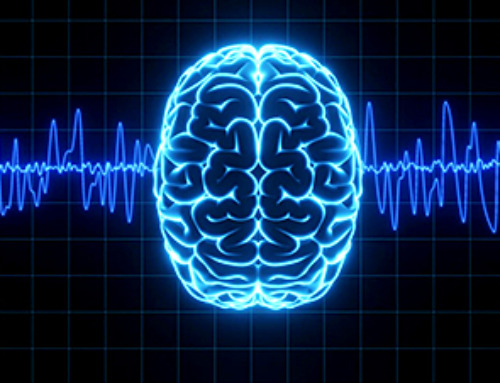Typically viewed as unrelated problems, global warming and plastic pollution are instead inextricably trapped in a "vicious circle" where one feeds the other, researchers in Sweden report in Nature Communications. The mutually-reinforcing relationship escalates global warming, the degradation of materials, plastic waste and the leaching of toxic chemicals into the biosphere.
Plastics that we rely on every day will deteriorate more rapidly because of rising global temperatures, and one effect will be a demand for more plastics. Xinfeng Wei, a researcher in polymeric materials at KTH Royal Institute of Technology in Stockholm, says meeting that demand will further compound greenhouse emissions that drive up the global temperature.
"A self-reinforcing cycle is formed, creating a vicious circle between climate change and plastic pollution," Wei says.
In 2019, plastics generated 3.4 percent of global greenhouse gas emissions, or about 1.8 billion tons, mostly on account of their production and conversion from fossil fuels, according to the Organisation for Economic Co-operation and Development (OECD). By 2060 that amount is expected to more than double.
Feedback Loop
The researchers describe a feedback loop linking these emissions with heat, moisture, and the weakening structural bonds that lend a wide range of advantageous properties to polymers, the term for materials—like plastic and rubber—which are formed from long chains of large molecules.
"The higher the increase in temperature, the more the materials' properties are compromised," Wei says. The stiffness of commonly used plastics like polyethylene, polypropylene, and polyvinyl chloride decreases by more than 20 percent as temperatures climb between 23 and 40°C, he says.
One effect of global warming is faster deterioration of plastics, which in turn results in higher carbon emissions, says Xinfeng Wei, seen here unpacking plastic pellets in the polymer materials lab at KTH Royal Institute of Technology in Stockholm. Credit: David Callahan
This deterioration means more frequent replacement of polymer products—everything from clothing to auto parts and appliances—and consequently greater manufacturing volumes and rates.
Knock-on effects range from rendering food packaging unreliable to the fouling of waterways and fish habitats by an increase in microplastics, he says.
Environmental Impact
The report also documents the release of volatile organic compounds (VOCs) in a warming climate as well as other hazardous compounds including lubricants, flame retardants, plasticizers, antioxidants, colorants, and UV/heat stabilizers. Heat will accelerate diffusion, evaporation, and leaching of these substances into the air, soil, and water, the report says.
The researchers draw attention to the combined effects of heat and moisture, which rise together due to global warming. "A warmer atmosphere increases the evaporation of moisture and can also hold more water vapor," Wei says.
That's bad news for many materials, but it wreaks particular havoc on plastics when combined with heat. "The combined effects of rising temperature and moisture create very challenging conditions for these polymers," Wei says.
To tackle the challenge of plastic pollution and climate change, Wei and the co-authors urged attention and mobilization of efforts across all sectors involved in the plastic lifecycle.
Reference: "Plastic pollution amplified by a warming climate" by Xin-Feng Wei, Wei Yang and Mikael S. Hedenqvist, 6 March 2024, Nature Communications.
DOI: 10.1038/s41467-024-46127-9
News
Advancements and clinical translation of intelligent nanodrugs for breast cancer treatment
A comprehensive review in "Biofunct. Mater." meticulously details the most recent advancements and clinical translation of intelligent nanodrugs for breast cancer treatment. This paper presents an exhaustive overview of subtype-specific nanostrategies, the clinical benefits [...]
It’s Not “All in Your Head”: Scientists Develop Revolutionary Blood Test for Chronic Fatigue Syndrome
A 96% accurate blood test for ME/CFS could transform diagnosis and pave the way for future long COVID detection. Researchers from the University of East Anglia and Oxford Biodynamics have created a highly accurate [...]
How Far Can the Body Go? Scientists Find the Ultimate Limit of Human Endurance
Even the most elite endurance athletes can’t outrun biology. A new study finds that humans hit a metabolic ceiling at about 2.5 times their resting energy burn. When ultra-runners take on races that last [...]
World’s Rivers “Overdosing” on Human Antibiotics, Study Finds
Researchers estimate that approximately 8,500 tons of antibiotics enter river systems each year after passing through the human body and wastewater treatment processes. Rivers spanning millions of kilometers across the globe are contaminated with [...]
Yale Scientists Solve a Century-Old Brain Wave Mystery
Yale scientists traced gamma brain waves to thalamus-cortex interactions. The discovery could reveal how brain rhythms shape perception and disease. For more than a century, scientists have observed rhythmic waves of synchronized neuronal activity [...]
Can introducing peanuts early prevent allergies? Real-world data confirms it helps
New evidence from a large U.S. primary care network shows that early peanut introduction, endorsed in 2015 and 2017 guidelines, was followed by a marked decline in clinician-diagnosed peanut and overall food allergies among [...]
Nanoparticle blueprints reveal path to smarter medicines
Lipid nanoparticles (LNPs) are the delivery vehicles of modern medicine, carrying cancer drugs, gene therapies and vaccines into cells. Until recently, many scientists assumed that all LNPs followed more or less the same blueprint, [...]
How nanomedicine and AI are teaming up to tackle neurodegenerative diseases
When I first realized the scale of the challenge posed by neurodegenerative diseases, such as Alzheimer's, Parkinson's disease and amyotrophic lateral sclerosis (ALS), I felt simultaneously humbled and motivated. These disorders are not caused [...]
Self-Organizing Light Could Transform Computing and Communications
USC engineers have demonstrated a new kind of optical device that lets light organize its own route using the principles of thermodynamics. Instead of relying on switches or digital control, the light finds its own [...]
Groundbreaking New Way of Measuring Blood Pressure Could Save Thousands of Lives
A new method that improves the accuracy of interpreting blood pressure measurements taken at the ankle could be vital for individuals who are unable to have their blood pressure measured on the arm. A newly developed [...]
Scientist tackles key roadblock for AI in drug discovery
The drug development pipeline is a costly and lengthy process. Identifying high-quality "hit" compounds—those with high potency, selectivity, and favorable metabolic properties—at the earliest stages is important for reducing cost and accelerating the path [...]
Nanoplastics with environmental coatings can sneak past the skin’s defenses
Plastic is ubiquitous in the modern world, and it's notorious for taking a long time to completely break down in the environment - if it ever does. But even without breaking down completely, plastic [...]
Chernobyl scientists discover black fungus feeding on deadly radiation
It looks pretty sinister, but it might actually be incredibly helpful When reactor number four in Chernobyl exploded, it triggered the worst nuclear disaster in history, one which the surrounding area still has not [...]
Long COVID Is Taking A Silent Toll On Mental Health, Here’s What Experts Say
Months after recovering from COVID-19, many people continue to feel unwell. They speak of exhaustion that doesn’t fade, difficulty breathing, or an unsettling mental haze. What’s becoming increasingly clear is that recovery from the [...]
Study Delivers Cancer Drugs Directly to the Tumor Nucleus
A new peptide-based nanotube treatment sneaks chemo into drug-resistant cancer cells, providing a unique workaround to one of oncology’s toughest hurdles. CiQUS researchers have developed a novel molecular strategy that allows a chemotherapy drug to [...]
Scientists Begin $14.2 Million Project To Decode the Body’s “Hidden Sixth Sense”
An NIH-supported initiative seeks to unravel how the nervous system tracks and regulates the body’s internal organs. How does your brain recognize when it’s time to take a breath, when your blood pressure has [...]

